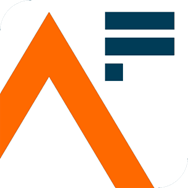Harmonised standards and guidance
What are harmonised standards and guidance?
Harmonised standards and guidance are tools for improving the comparability and coherence of statistics.
Being harmonised is about aligning with others, not necessarily being identical to them. As such, some of our harmonised standards can be tailored for specific situations. Further information on the importance of harmonisation can be found on the dedicated harmonisation page of this website, or in the United Kingdom (UK) Statistics Authority’s explanation of how coherence relates to the Code of Practice for Statistics.
Harmonised standards include definitions, survey questions, suggested presentations and information for data users. Producers of statistics can use these harmonised standards to align with others, which will increase the usefulness of their statistics.
In some circumstances, it is not appropriate to suggest harmonised questions and definitions. In these cases, harmonisation guidance explains the topic landscape to help users understand where they can and cannot compare data.
Work on the standards has been developed by topic groups, after wide consultation across the Government Statistical Service (GSS) and beyond.
Updates to standards and guidance by topic
In October 2020, the National Statistician established the Inclusive Data Taskforce. It was designed to improve the UK’s inclusive data holdings in a broad range of areas. This includes the nine protected characteristics of the Equality Act.
In September 2021 the Taskforce recommendations were published. Some of these recommendations specifically refer to harmonisation.
In response to the recommendations, the Office for National Statistics (ONS) oversaw the publication of an Implementation Plan in January 2022. This gives information about the current and planned initiatives across the UK statistical system. It refers to a GSS Harmonisation workplan, which was published in February 2022. An updated workplan was published in 2024, which includes priority topics, activities and timescales from 2024 onwards.
Age and date of birth harmonised standard
Cohabitation harmonised standard
Definition of a household harmonisation guidance
Household reference person harmonised standard
Household relationships harmonised standard
Marital or civil partnership status harmonised standard
National identity harmonised standard
Sexual orientation data harmonised standard
Gender Identity Data Harmonisation Guidance
Welsh language skills harmonised standard
General health harmonised standard
Long lasting health conditions and illness harmonised standard
Activity restriction harmonised standard
Measuring disability with EU data harmonisation guidance
Measuring disability for the Equality Act 2010 harmonisation guidance
Mental health harmonisation guidance
Impairment harmonised standard
Unpaid care harmonised standard
Coronavirus (COVID-19) harmonisation guidance
Pregnancy and maternity harmonisation guidance
